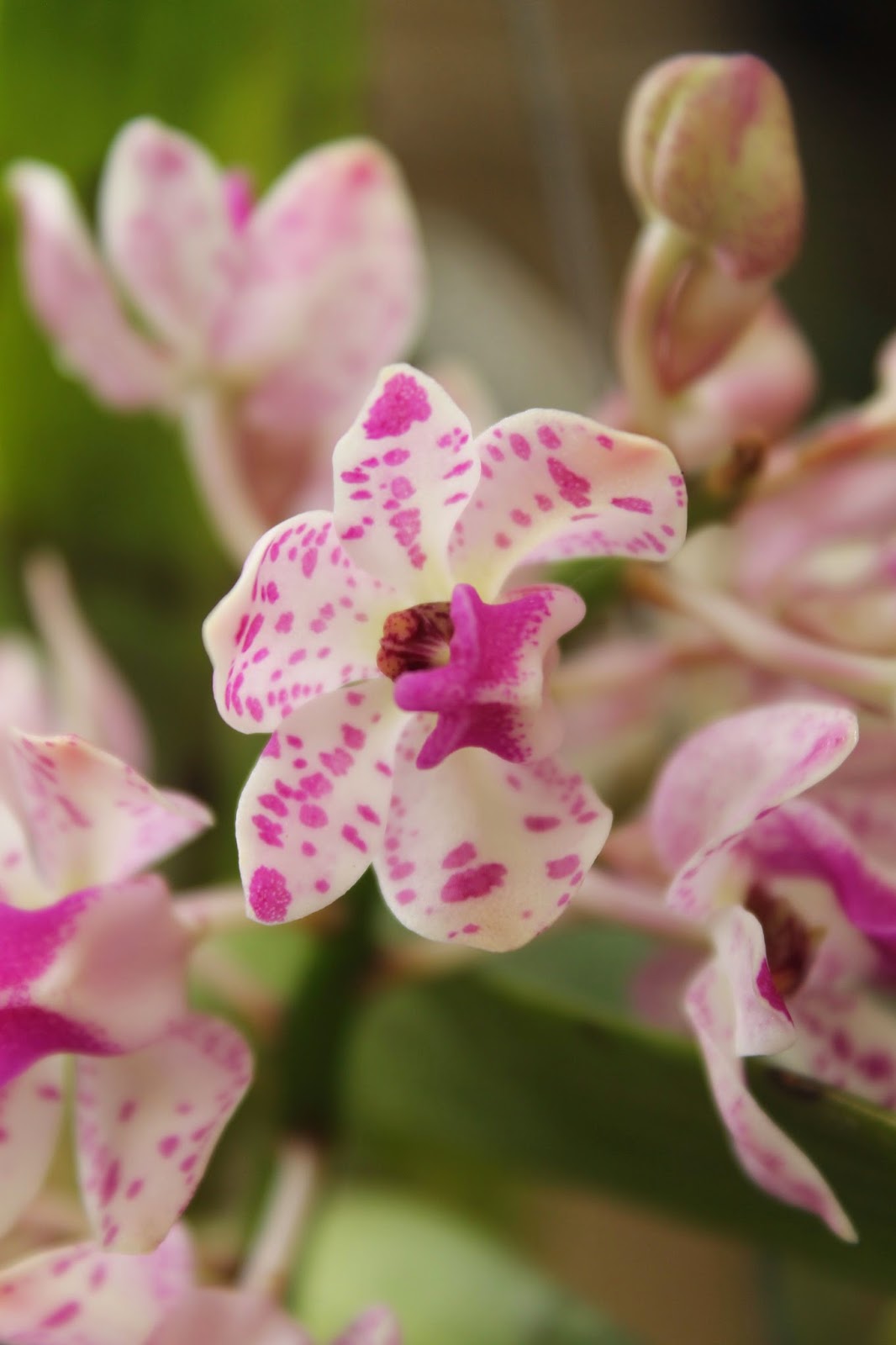Vanda tessellata (Roxb.)
Hook. 1850 SECTION Longicalcarata
Common Name: The Lattice-Like Paterned
Flower Vanda
Juice of the compressed plant is used as a
cure all drink in Malaysian peninsula. V. tessellata plants have been used in
the indigenous medicine such as Ayurveda and local traditional medical
practices. The leaf juice is used for the treatment of certain inflammatory
conditions. It is also instilled into the ear as a remedy for otitis. The
leaves paste is applied to the body to bring down fever. Root paste is applied
to the affected area for the treatment of rheumatism. The root paste
is also used in treatment of nervous problems, bronchitis, dyspepsia and fever.
Unani practitioners hold it to be laxative and tonic to the liver. It is also
used to treat hiccough, piles & boils in head.
Distribution
& Occurrence:
Western Himalayas, Burma to south India
& Srilanka @ elevations of 1200 to 3000 Meters.
The
Plant
Medium to large sized warm to cold growing vandaceous
epiphyte with climbing stems and semi terete leaves
Flowers around the year in summer, autumn
and winter. Inflorescence carries 6-12 fragrant long-lived flowers. Flower
shade and lip shade are very variable ranging from yellow to blue.
There is also a difference in flower size
and bloom frequency, The North Indian varieties are the smallest but flower
more frequently while the Sri Lankan varieties are bigger, of better form and
some of them come in various shades of red and grey though they are not as
floriferous as the North Indian ones. The South Indian ones are somewhere in
between in terms of size and they do bloom quite often.
Vanda tessellata can be identified by it's
fish bone pattern of leaf arrangement the side lobes on the lip have a very
characteristic pointed curve which is not seen even in its first generation hybrids.
Cultural
Requirements and Nutrition
Grow in moderate strong light with long
hours of direct sunlight. Water and fertilize throughout the year.
Pest
and Diseases
No specific pests or disease.
Hybrids
Vanda tessellata has been used extensively
in hybridization, with Vanda Mimi Palmer a very striking lookalike being one of
the most famous and V Cindy Banks and V Arjuna Wink being other famous hybrids
Bloomed in Oct 2014












